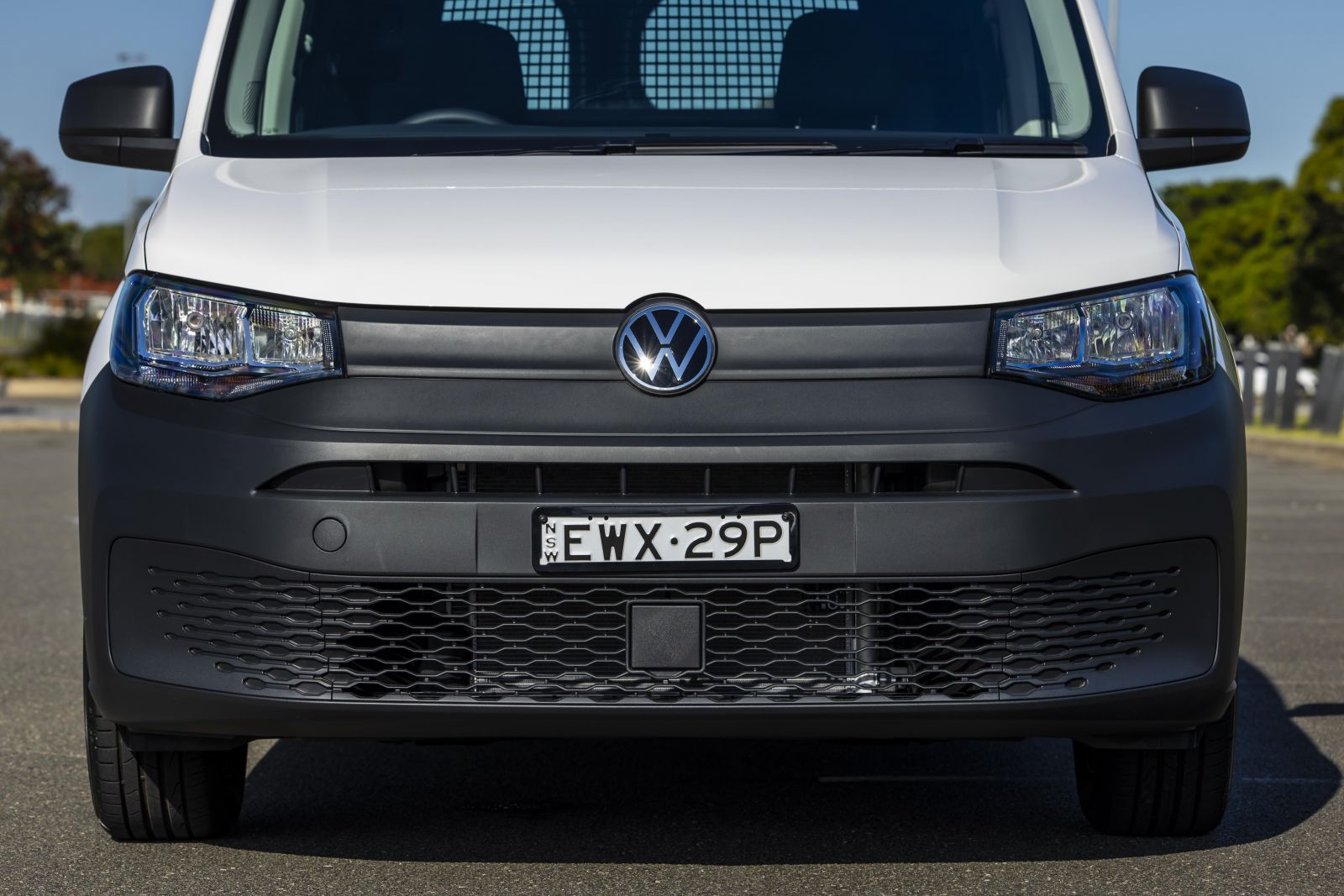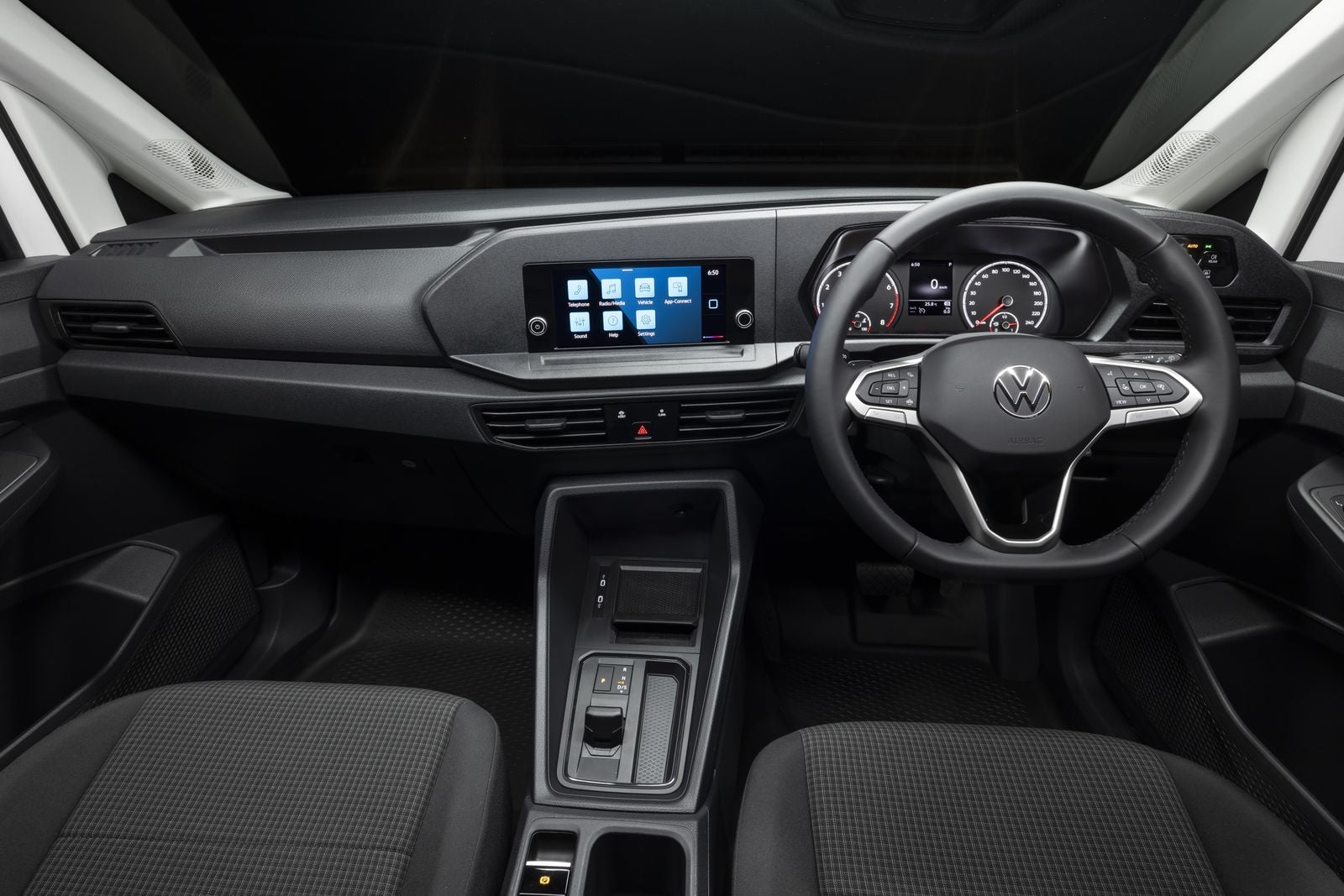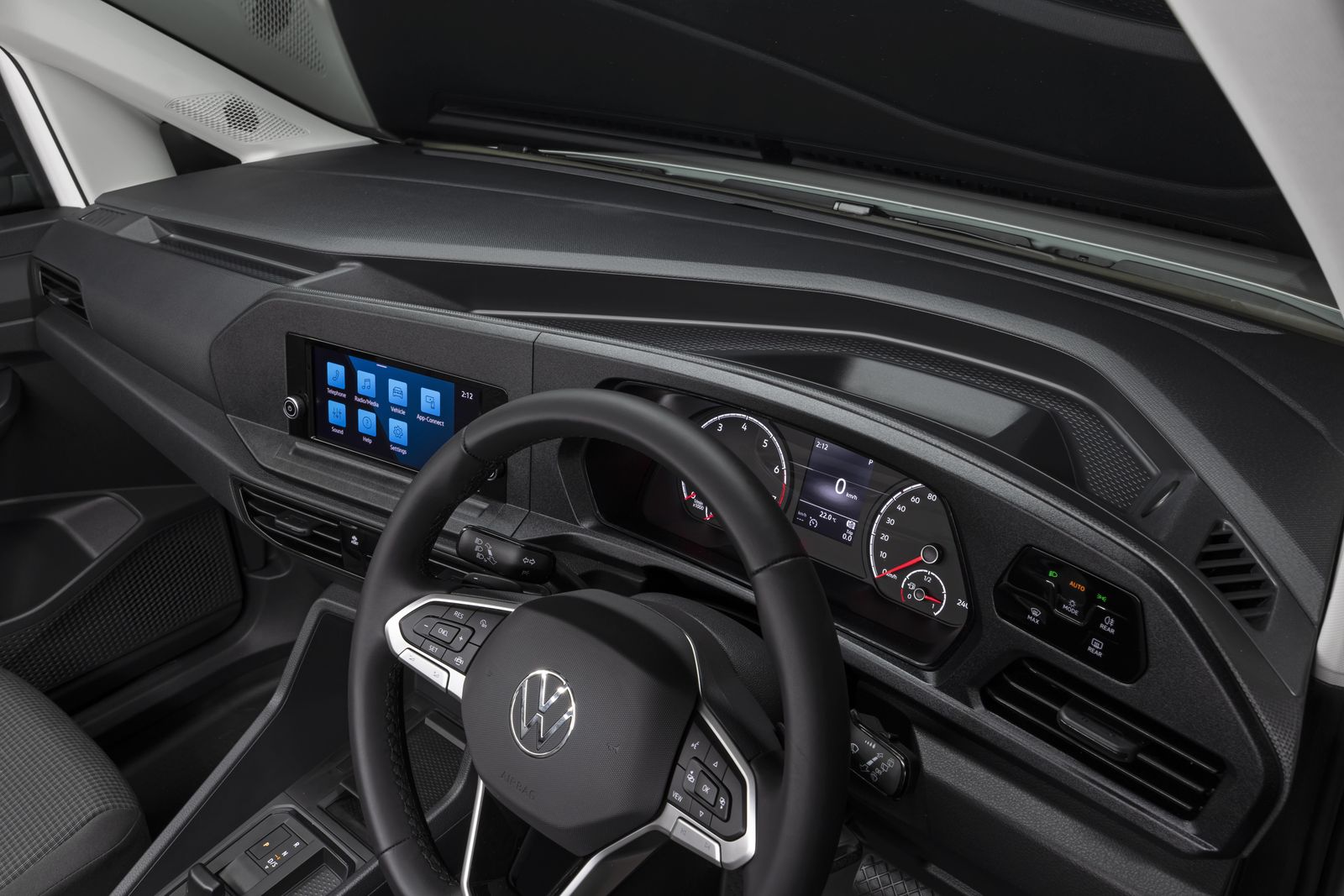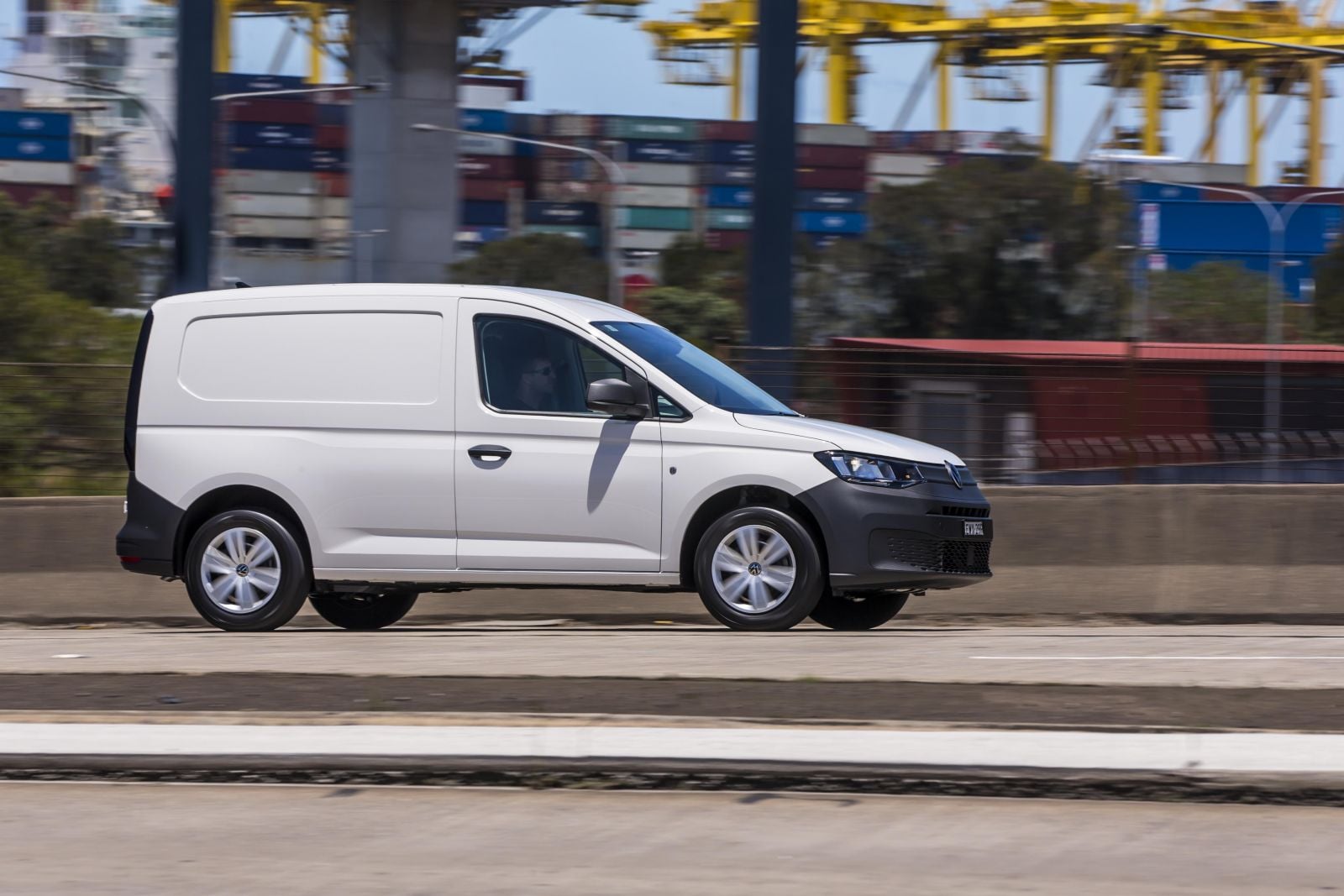The Volkswagen Caddy Cargo van range has been updated for 2023, with more advanced safety tech across the line-up.
But this review also represents our first time driving a new-gen Caddy Cargo with a petrol engine, as the brand had only been able to loan diesel models to this point.
The Caddy topped the sales charts in 2022, on the back of the existing Renault Kangoo van entering run-out before a fully electric new-gen model of that van arrives in 2023.
No electric version of the Caddy is offered here or anywhere else in the world.
The VW commercial vehicles business does have the ID. Buzz Cargo electric van, which will hopefully get here at some point, but it’ll likely be much more expensive than any Caddy Cargo van.
So, is the petrol version of the Caddy the one you should pick? Read on.
How much does the Volkswagen Caddy Cargo TSI220 cost?
Good question. New car prices seem to skip, hop and jump around quite a bit in the current Aussie car market, and VW isn’t divorced from that reality.
2023 Volkswagen Caddy Cargo TSI pricing:
- Caddy Cargo SWB TSI220 6MT: $37,490
- Caddy Cargo SWB TSI220 7DSG: $40,490
- Caddy Cargo Maxi LWB TSI220 6MT: $39,490
- Caddy Cargo Maxi LWB TSI220 7DSG: $42,490
- Caddy Cargo Maxi Crew Van LWB TSI220 7DSG: $46,490
Between the brand announcing pricing for MY23 Caddy and the confirmation email coming through about the loan of the car I was driving, the price went up by $500. Still, those prices roughly represent a $2000 saving across the board compared to TDI diesel versions.
If you’re thinking, “that’s pretty expensive for a small van!”, you’re not wrong. The last-gen Caddy petrol used to start at $25,840. It does get more gear than ever before to help justify the big cost jump, though – more on that below.
What is the Volkswagen Caddy Cargo TSI220 like on the inside?
There are some obvious carryover elements from the VW passenger car range here, including a lot of the switchgear and the steering wheel, as well as the gear-shifter, electronic park brake, and other storage and parts of the cabin.
I like that it’s a leather-lined steering wheel, and that it doesn’t have haptic buttons like some other new VW models – which, I imagine, would be terrible if you were wearing work gloves.
I guess negating that point is the notion of paddle-shifters, which are present. Weird.
As so many compact vans are used for urban duties by small businesses, the Caddy does a great job of doubling as a mobile office for owner-operators and vehicle users.
It has excellent in-cabin storage throughout the cockpit.
There is a big open section on top of the dashboard for folders and other loose items, while there’s also a massive overhead compartment above which is excellent for storing books, magazines, pamphlets, laptops, tablets, folders – or anything else that might fit. It’s very thoughtful in that regard.
There’s also quite a bit of storage between the seats, but annoyingly, no covered centre console section, and therefore no centre armrest. That means that if you are one of those people who does a lot of long-distance driving, it could be fatiguing.
There are two cupholders in the centre, and in front of the shifter there is now a wireless phone charger with a smart little clamp cover on top of it to make sure that you aren’t looking at your phone. That is also a wireless charging bay, but you still need to connect via USB for smartphone mirroring in the Caddy.
There’s a small storage bin in front of the drivers knee (right side), a decent sized glovebox, and massive door pockets; but unlike Volkswagen passenger vehicles, those pockets are not lined – that means things will rattle around.
One thing that’s good about the cabin and the cargo areas is that both feature LED interior lighting, which means you can see everything you need to – a shame VW doesn’t have the same mentality about the headlights…
The least usable element of the cabin is the touchscreen media system, unless all you do is connect your phone to Apple CarPlay or Android Auto by USB every single day. Then it’ll be fine.
But as soon as you need to adjust things, like the climate control, it can be a little bit fiddly. Press the ‘Clima’ button, then go through the screen to adjust things.
If you’re the sort of person who doesn’t really care what the temperature is inside the cabin, that might be okay – but for others it won’t. At the very least, there are volume and tuning knobs on both sides of the screen.
Speaking of screens, there is a very small one (4.2-inch TFT) between the two instrument dials, it’s not a colour one either.
It does have enough information – including trip computer and a digital speedometer – but it certainly doesn’t feel like a 2023-spec interior without the optional Digital Cockpit screen there.
Now, in the cargo area, you’ve got 3.1m3 for the SWB and 3.7m3 for the Maxi LWB models.
There is 1797mm of storage length in the SWB model, while the Maxi LWB model has 2150mm of load length.
The cargo area measures 1230mm between the wheel arches (big enough for a 1165mm x 1165mm Aussie pallet) and 1614mm from wall to wall.
The height of the cargo zone is 1272mm for SWB and 1275mm for LWB. The rear door opening is 1234mm wide by 1122mm high for barn doors for both versions.
The standard single side sliding door on the SWB offers 703mm of space (695mm with the partition), while LWB models have 846mm openings (836mm with partition). That means you could fork load a Euro pallet in the side door of the LWB, but not the SWB.
Rear barn doors are standard, and thankfully these days that doesn’t mean no camera – in the past, commercial vehicle brands had a real problem trying to get a camera to work with barn door. Go figure!
The doors also have latches to allow for 180-degree opening at the back. Very handy.
There are a bunch of different optional cargo fit out and flooring choices. The test vehicle had just a painted finish, which will scuff quickly.
There are six tie-down points in the floor area, half-height wall lining, and that’s about it. Only one side sliding door is standard, but you can option another one if you need it.
What’s under the bonnet?
The new 1.5-litre turbocharged petrol four-cylinder engine has direct injection, variable turbine geometry and active cylinder technology, meaning it can run on two cylinders under light load to help save fuel.
The Caddy’s petrol engine is known as TSI220, with that numerical suffix referring to the torque output. The little 1.5L produces 84kW of power (4500-6000rpm) and 220Nm of torque (1750-3000rpm).
Buyers have the choice of a cheaper six-speed manual, or a seven-speed DSG dual-clutch auto transmission. The Caddy is front-wheel drive.
Towing capacity for petrol models is a little less than the diesel versions. The unbraked rating varies a little between versions, but for a braked trailer, the maximum for the petrol is 1400kg, while diesels can do an extra hundred, at 1500kg.
Payload figures for petrol models are as follows (with the diesel equivalent in brackets):
- SWB TSI manual: 746kg (TDI 747kg)
- SWB TSI auto: 717kg (TDI 742kg)
- LWB TSI manual: 764kg (TDI 743kg)
- LWB TSI auto: 735kg (TDI 757kg)
- LWB Crew Van TSI auto: 713kg (TDI 738kg)
Remember, payload isn’t the figure for “just what’s in the cargo area” – it’s the weight capacity of the vehicle, and you need to factor yourself into the number, as well as any applicable passengers and accessories, such as a racking fitout in the cargo zone.
Not to get too far into the weeds on weight specs, the gross vehicle mass (GVM) is different across versions, as well:
- SWB petrol: 2150kg
- LWB petrol: 2250kg
- LWB Crew Van petrol: 2350kg
How does the Volkswagen Caddy Cargo TSI220 drive?
Car-like is the best way to describe handling and driveability of the Caddy.
It is a very easy van to drive, and offers excellent comfort for day-to-day duties for people who are running small businesses.
The suspension offers a comfortable and supple ride, while also maintaining nice balance through roundabouts or through higher-speed corners.
The steering is also a delight, offering nice feel through the wheel, with a good amount of weight to it as speeds progress. At lower speeds it’s light and very user-friendly.
The engine is up to the task, with enough power and torque to get the job done – though people who carry heavy loads more often may be better off to go with the diesel option, just for that little bit more effortlessness at low- to mid-rev range speeds. The nature of the petrol is that it is more eager to rev, and that could be fine for lighter-load users.
The transmission is mostly quite good, with a little bit of hesitation at times from a standstill. It also isn’t afraid to hang onto a gear and let the engine’s torque do the job in unladen situations.
But as has long been the case with the Caddy when equipped with a DSG transmission, it almost feels better when it’s got more weight in it and the transmission is doing its thing.
There’s not too much road noise aside from some noticeable tyre roar at lower speeds when turning. The bulkhead divider between the cockpit and cargo space certainly helps keep things hushed at higher pace.
If you’re wondering about park-ability, it’s not too bad. The reversing camera is crisp, clear and fast to activate, making it pretty easy to get in and out of tight spots.
The Caddy short-wheelbase measures 4500mm long on a 2755mm wheelbase, and it’s 1856mm tall and 2100mm wide including the mirrors. So, quite a squat presence on the road.
Further, it has a bigger turning circle than you might expect – 11.4m for the SWB and 12.1m for the LWB.
Thankfully the mirrors are pretty decent – though for that extra peace of mind I’d be optioning the van with blind-spot helping technology, as it can be very difficult to see out the back – even through the glass in the partition, which has a gridded protector over it, and then you’ve got barn doors with a thick centre obstruction to your outward view.
What do you get?
The Caddy Cargo MY23 range saw inclusions “at no additional cost”, but then the price went up…
Anyway, if you get a MY23 instead of an MY22 model, you will gain wireless smartphone charging as standard, and there are a bunch of new safety tech items included – more detail on those in the safety section.
The MY23 Caddy Crewvan’s twin side sliding doors now feature pop-out side windows that open 40mm for additional ventilation.
However, note that MY23 models don’t have sat nav or the semi-autonomous Park Assist function, because of the global semiconductor supply shortage.
Caddy Cargo highlights:
- Cloth seat upholstery
- Leather-wrapped multifunction steering wheel
- Steering height and reach adjustment
- Rubber flooring in driver’s compartment
- LED lights in cabin and load area
- Cabin partition bulkhead with window and grille
- Leather-wrapped shift knob for manual transmission
- H7 twin halogen headlights
- Auto headlights
- 16-inch steel wheels with covers
- Full-size steel spare wheel
- Single sliding door, left, 695mm wide
- Rear barn doors, with windows
- Black front and rear bumpers
- Power adjustable and heated exterior mirrors
- 8.2-inch infotainment touchscreen
- 4-speaker stereo
- App Connect (wired Apple CarPlay, Android Auto)
- 2 x USB-C ports
- Remote central locking
- Power windows
- Manual air conditioning
- Rear parking sensors
- Reversing camera
Caddy Cargo LWB Maxi adds:
- 17-inch black steel wheels with covers
- Dual-sliding side doors, 836mm wide (353mm longer than SWB Cargo)
Caddy Cargo LWB Crew Van adds:
- 4-way power-adjustable lumbar support for driver
- 3-seat bench for second row, folding and removable
- Rubber flooring throughout
- Front-centre armrest and rear vents
- Pop-out windows in sliding doors
- Black painted exterior mirror caps, body-coloured door handles and silver sliding door rails
- 6-speaker stereo
If you’ve ever read anything about a VW Commercial product before you know that the brand is big on offering customers the option to basically build their dream van.
As a result, there are literally dozens of things you can do to tailor your van to your requirements, from alloy wheels to LED headlights (which shouldn’t be a $1370 option, VW!), heated seats to tyre pressure monitoring (also, it shouldn’t be optional, even if it’s just $100).
Consult with the dealership and a product brochure to ensure you know what’s available. The list is too long to include here.
Is the Volkswagen Caddy Cargo TSI220 safe?
As mentioned above, there have been improvements to the standard safety fitout for Caddy Cargo and Crew Van models – which already had a five-star ANCAP safety rating stamped in 2021.
There is a new Lane Assist function, which works above 60km/h to “provide regulated counter steering as soon as the vehicle looks as though it is going to leave its lane and the driver has not activated the turn signal”.
Further, the brand’s forward collision system, known as Front Assist, now offers pedestrian and cyclist detection (between 5km/h and 85km/h), plus Junction Assist, which can “detect oncoming traffic when turning at an intersection and can apply braking to avoid a collision”.
This stuff was previously available on Crew Van models, but not the two-seater versions.
Caddy Cargo models come standard with:
- AEB with Pedestrian, Cyclist, Junction assist
- Driver attention monitoring
- Reversing camera
- Rear parking sensors
- 7 airbags incl. front-centre airbag
- Lane-keep assist
Caddy Crew Van adds:
- Curtain airbags for outboard rear seats
- ISOFIX child seat anchors in outboard rear seats
- Top-tether points for all three rear seats
However, still missing from the standard kit list is blind-spot monitoring and rear cross-traffic alert, both of which would be not only convenient, but possibly crucial safety features for blind-spot-prone vehicles like this.
You can option that tech if you pick the $1825 Comfort Drive Travel Assist Package. It adds those items, Emergency Assist (calls 000 in the event of an emergency), front parking sensors (rear are standard), adaptive cruise control with speed limiter, digital cockpit instruments, DAB radio, keyless entry and push-button start and more.
The best advice I can give anyone considering a Caddy is to study the standard kit list, and make sure you know what you need to option to make the van right for your needs. And be aware, it might make it prohibitively expensive.
How much does the Volkswagen Caddy Cargo TSI220 cost to run?
The brand offers a five-year unlimited kilometre warranty, and there’s a five-year/75,000km capped-price servicing available as well. But with an average cost of $628.40 over that five-year plan, it is pretty pricey.
The hot tip here is to avoid paying such high rates for maintenance every 12 months/15,000km, you should prepay your servicing with one of VW’s Care Plans. For the Caddy Cargo petrol, you’ll get five years’ cover for just $1500. That’s a huge saving.
The brand has a roadside assist program – you get one year free at the time of purchase, and if you service with VW you can get up to 10 years of free roadside assistance included.
If you can achieve the official combined cycle fuel consumption figure in the real world, you’ll be doing well. The manual version’s number is 6.4 litres per 100 kilometres, and the DSG auto tested here claims slightly less, at 6.2L/100km.
If you’re running around in it with nothing in the cargo zone, you could get close – but if you start to ask more of this engine, it’ll use a bit more juice, even with engine start-stop technology and cylinder deactivation helping out. For reference, I saw 7.2L/100km, with minimal loaded driving.
CarExpert’s Take on the Volkswagen Caddy Cargo TSI220
In short, the Caddy Cargo petrol is too expensive and the options list is too extensive.
If the buy-in cost isn’t a concern for you, and you think you can deal with that frustrating infotainment screen, then it really is a decent little work van.
It is superbly comfortable and practical for the size, and drives nicely as well.
Click the images for the full gallery



















